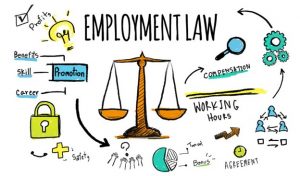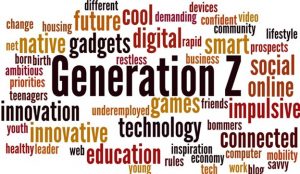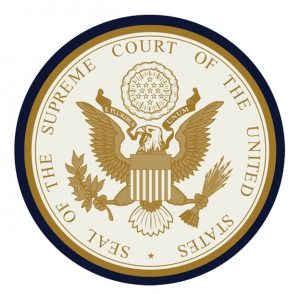 Culture Conundrum
Culture Conundrum
Two years after the pandemic began, organizations are still adjusting to the COVID-19 world. From government shutdowns and supply chain disruptions to a mental health crisis, the pandemic has adversely affected the world of work in myriad ways. Today’s employers are finding it increasingly difficult to recruit new staff, making it all the more challenging to grow their business and the economy. The elusiveness of talent is unprecedented.
SHRM found, that workplace culture remains positive across the 12 countries. Even a pandemic couldn’t wreak havoc on workplace culture, which speaks to the strides that organizations have made in recent years. For the organizations that dedicated themselves to cultural change before the pandemic, their commitment to positive work environments bore fruit at a time of crisis. Workers generally feel safe and heard at work, increasing their productivity and benefiting the bottom line. Still, organizations must remain vigilant. New economic trends, namely the ‘Great Resignation’, make it all the more imperative to prioritize culture. Based on SHRM’s survey of workers from 12 different countries, workplace culture will spell the difference between success and failure in a post-pandemic world. Now is the time to focus on communication, transparency, trust and all of the other tenets of a strong work environment—one that puts workers first.
Key Findings
- Despite the turmoil of the COVID-19 pandemic, workplace cultures have remained unwaveringly positive. Globally, nearly 3 in 4 workers (72%) rate their workplace culture as good or very good.
- Even in a pandemic, workers feel safe at work. Nearly 9 in 10 workers globally (86%) feel physically safe at work and over 4 in 5 workers (82%) feel emotionally safe at work.
- Yet, despite overwhelmingly positive and safe workplace cultures, the Great Resignation is sweeping the globe. Almost half of workers globally (45%) have thought about leaving their current organization.
- Negative workplace culture experiences will drive top talent to look elsewhere. Globally, workers who rate their culture as poor (64%) are more likely to have actively searched for a new job in the past six months, as compared with workers who rate their culture as good (22%).
- Poor workplace culture can be a consequence of poor people management. Globally, one-third of workers (33%) say their manager does not know how to lead a team. That number rises to 54% among workers who are actively looking for a job.
- Organizations that fail to demonstrate empathy leave themselves vulnerable to turnover. Globally, 93% of workers who work at an organization that offers empathy training said they love working for their organization because of the culture, compared with 56% of workers who work at an organization that does not offer such training.
- In a post-pandemic world, the divide between organizations that empower workers and those that don’t will continue to widen. Employees who rate their workplace culture as good (95%) are more likely to say they have a meaningful career working for their organization, as compared with those who rate their culture as poor (32%). Workers will take notice of the bad actors and choose to work for the good ones. Globally, one thing is clear: Workplace culture matters everywhere
From Society for Human Resource Management, SHRM, 6/2022. Read the full report here: https://shrm.org/hr-today/trends-and-forecasting/research-and-surveys/Documents/SHRM%202022%20Global%20Culture%20Report.pdf
 Outdoor Workers? Heat combined with smoke from wildfires. Take Note.
Outdoor Workers? Heat combined with smoke from wildfires. Take Note.
With summer weather and wildfire season approaching, Washington State employers will have new seasonal workplace safety rules to take into account. California has already implemented similar rules. Other western states are expected to follow suit.
On June 1, 2022 the Washington State Department of Labor & Industries adopted emergency rules that add to already existing protections for outdoor workers from the summer conditions of heat exposure and wildfire smoke. Both emergency rules took effect on June 15.
Outdoor Heat Exposure
Under the existing rule, employers with outdoor workers are required to maintain outdoor heat-exposure prevention plans, provide annual heat-exposure training to employees and supervisors to prevent illness, and increase the amount of drinking water available to workers and opportunities to drink it. The existing rule is effective annually between May 1 and September 30.
Under the emergency amendments to the existing rule, Washington employers are required to take extra precautions, which include:
- ensuring a sufficient quantity of suitably cool drinking water is readily accessible to employees at all times;
- providing access to shade or comparable opportunities to reduce body temperature, which could include air-conditioned spaces or vehicles;
- educating workers about the importance of preventative cool-down periods to protect against overheating, and paying employees during those preventative periods;
- mandating paid cool-down rest periods of 10 minutes every two hours when the temperature is 89 degrees Fahrenheit or higher;
- implementing a system by which employees can communicate with their supervisor when necessary (e.g., cell phones in areas with reliable service);
- closely observing employees for signs of heat-related illness; and
- training employees about the requirements under the emergency rule.
This list is not exhaustive. The existing rule requires additional measures, such as ensuring sufficient hydration levels, prioritizing acclimatization, which is further defined in the emergency amendments as a period of seven to 14 days, and providing specific employee and supervisor training, including identifying signs of heat-related illness and determining whether medical attention is needed. Employers may want to review and understand their obligations under the heat-exposure rule.
Wildfire Smoke
Washington joins California and Oregon in requiring employers to take specific preventative measures to ensure worker safety when workers will be exposed to wildfire smoke.
Under Washington’s emergency rule, employers are required to monitor the Air Quality Index (AQI) and take specific action when workers are exposed to levels of 69 or higher. Additional requirements are imposed when the AQI measures from 101 and 500, and higher than 500.
For example, Washington employers must:
- monitor worksite AQI,
- establish hazard communication systems with employees,
- maintain wildfire smoke response plans tailored to their specific workplaces within their written accident prevention programs,
- provide specific information and implement training programs for employees and supervisors,
- monitor employees for symptoms of exposure, and
- ensure prompt medical treatment when necessary.
Washington employers also may be required to provide respiratory protection to employees free of charge when certain AQI levels are observed.
 Gen Z- Grown up and Burnt Out?
Gen Z- Grown up and Burnt Out?
It seems like everyone’s thirsty to vibe with Gen Z right now. And who could blame them? The generation born starting in 1997 is the most diverse in US history, touts $360 billion in potential disposable income, and is expected to make up approximately 30% of the workforce in the US by 2030, according to the Bureau of Labor Statistics.
Employers, in particular, want to know how Gen Z feels about remote work, social causes, burnout, and everything in between. To that end, there have been a slew of surveys and studies attempting to help employers understand Gen Z (and millennial) workers, including recent reports from Deloitte, Indeed, and Asana. Though the findings didn’t agree on everything, they generally aligned on a portrait of Gen Z that featured a longing for in-person collaboration, higher levels of stress and anxiety, and a yearning for purpose at work.
Office versus home. Surveys show that, by and large, Gen Z workers crave flexibility and the option of working from home. The Deloitte Global 2022 Gen Z and Millennial survey recently found that 75% of Gen Zers prefer a hybrid or work-from-home model, as do their millennial counterparts (76%). But while they want to work from home at least sometimes, over 90% of Gen Z employees surveyed who have never worked in an office full-time have FOMO about traditional workplace experiences, according to research from Indeed.
Sahar Yousef, a cognitive neuroscientist and lecturer at UC Berkeley’s Haas School of Business, told HR Brew that Gen Z’s desire to work in an office is understandable, given the social opportunities an office can offer. “The workplace historically has been a watering hole for finding friends, finding a mate, finding community, a sense of belonging, and having connection,” Yousef said. “Our jobs are a huge aspect of our holistic lives.”
Burning out. Whether they’re at home or in the office, it seems the newest generation to enter the workforce is already burned out. A survey from workflow management platform Asana found that 84% of Gen Z reported experiencing burnout in the last year, compared to 63% of all workers who said they’ve felt burned out. Deloitte’s research also found that 46% of Gen Z workers were “stressed or anxious all or most of the time” and that stress is frequently tied directly to a poor work-life balance.
 COVID Corner
COVID Corner
What are the new, updated quarantine and isolation guidelines?
With the new variants, COVID is once again spiking in certain areas of the country. The CDC and local health departments have updated the guidelines to exposure. Refer to your health department for what they are recommending.
Gallatin County Health Department has an updated guide, available here: Updated Quarantine Guidelines
Can we ask an employee if he or she has received the COVID vaccination?
Under federal law, employers are permitted to ask employees if they have been vaccinated against COVID-19; however, caution should be taken to avoid soliciting information related to an employee’s medical condition. A simple yes or no response from employees should be sufficient, and employers should instruct employees not to provide additional information about the reason they may not have received the vaccine. The Americans with Disabilities Act (ADA) requires an employer to maintain the confidentiality of employee medical information, such as documentation or other confirmation of COVID-19 vaccination.
Any federal requirement for employers to collect employee vaccination status pre-empts (overrides) any state or local laws that do not allow employers to ask employees for their vaccination status and proof of vaccination.
Employers not covered under a federal requirement should check their state laws. For example, Montana prohibits employers from requiring employees to disclose their immunization status, possess an immunity passport, or receive vaccines used under an emergency use authorization or undergoing safety trials.
Can we require a doctor’s note before allowing a sick employee to return to work?
If an employer applies the practice consistently, clearance from a health care provider to return to work can be required. However, guidance from the CDC suggests employers remove such requirements during a health crisis as access to health care providers may be limited.
Do we have to allow employees to work from home?
While not required, telecommuting may be a practical measure to reduce exposure of the virus in some work environments. Employees with disabilities that put them at high risk for complications from the virus may request telework as a reasonable accommodation to reduce their chances of infection during a pandemic.
Can I require an employee to go home (or stay home) if he or she is sick?
Yes, employees who show signs of respiratory illness can be asked to leave the workplace and stay at home until they are symptom free.
Should employees be required to wear a face mask in the workplace?
On Feb. 25, 2022, the CDC relaxed its mask-wearing guidance, now recommending that individuals (regardless of vaccination status) wear a mask in public indoor settings in areas of high community levels where there is strain on the healthcare system. Additionally, some states and localities continue to enforce mask requirements, and private businesses and workplaces may set their own policies.
Employers should also continue to follow OSHA’s guidance for all employers, updated Aug. 13, 2021, which recommends employers continue to protect unvaccinated workers by requiring them to wear masks and encourages employers to require masks for everyone in indoor settings in areas of substantial or high community transmission.
 Political Discussions in the Workplace
Political Discussions in the Workplace
With the reversal of the landmark decision (Roe vs Wade) now official (a draft of the ruling was leaked last month), HR and benefits leaders in particular now have a big job ahead of them in figuring out how to navigate what it all means and what comes next. A recent SHRM report suggested that many workers have discussions about political issues at work, and those discussions are leading to conflicts:
- 56 percent of U.S. employees said politics and the discussion of political issues have become more common in the last four years.
- 42 percent have personally experienced political disagreements in the workplace.
- 34 percent said their workplace is not inclusive of differing political perspectives.
- 12 percent have personally experienced political-affiliation bias.
Sometimes, facilitating rather than discouraging political or racial discussions in the workplace is the best approach.
But some employers have banned workers from using internal social media outlets for political, racial or religious conversations. Organizations can ask employees to limit their communications to work-related matters when using company software.
Remember, some political discussions are protected by labor laws. However, banning employees from having conversations on sensitive topics like abortion rights becomes more difficult when those conversations are held in the break room or elsewhere at work.
If you’re wondering how best to handle these discussions in the workplace, talk with your HR rep, they will help you navigate the road ahead.
Read the full article here: Workplace Political Discussions